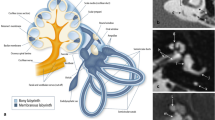Abstract.
A group of structures in the human central nervous system (CNS) represents a noteworthy dilemma for the neuroscientist, particularly to the neuroanatomist. In this paper an attempt is made by extensive review of the literature to give an account of the significance of the subcommissural organ (SCO) in humans and its possible relationship with cerebrospinal fluid (CSF) disorders. The subcommissural organ is a gland located in the diencephalic plate caudal to the pineal organ that covers the anterior part of the posterior commissure. Histologically, it is a highly differentiated ependyma. After birth, the SCO undergoes regressive changes, and in the adult human only remnants of the specialized SCO cells can be found. The Reissner's fiber (RF) may be regarded as a pure secretory product of the SCO. Only a few vertebrate species have been reported to lack an RF, namely the bat, camel, chimpanzee, and man. Nonetheless, a successful immunoreaction against a proteinaceous compound of the fetal human SCO has been performed. Recently, new interest was elicited regarding SCO and its possible implication in the pathogenesis of hydrocephalus. The objective of this review is to bring into consideration the relevance of the SCO to the neurosurgical scenario.
Similar content being viewed by others
Author information
Authors and Affiliations
Additional information
Electronic Publication
Rights and permissions
About this article
Cite this article
Galarza, M. Evidence of the subcommissural organ in humans and its association with hydrocephalus. Neurosurg Rev 25, 205–215 (2002). https://doi.org/10.1007/s10143-002-0208-y
Received:
Accepted:
Published:
Issue Date:
DOI: https://doi.org/10.1007/s10143-002-0208-y




